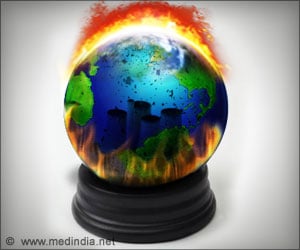In Afghanistan, Bangladesh, India and Pakistan, young people living are among those most at risk of the impacts of climate change, threatening their health.

‘South Asia is home to over 600 million children and has the highest number of young people globally. South Asian countries are among the most vulnerable globally to the impacts of climate change. Extreme climate-related events - heatwaves, storms, floods, fires and droughts - affect more than half of the region's population every year and continue to burden South Asian countries' economies.’





'The Climate Crisis Is a Child Rights Crisis: Introducing the Children's Climate Risk Index' (CCRI) is Unicef's first child-focused climate risk index. It ranks countries based on children's exposure to climate and environmental shocks, such as cyclones and heatwaves, as well as their vulnerability to those shocks, based on their access to essential services. Pakistan, Bangladesh Afghanistan and India are among four South Asian countries where children are at extremely high risk of the impacts of the climate crisis, with a ranking of 14, 15, 15 and 26, respectively. While Nepal is ranked 51, Sri Lanka is at 61st place. Bhutan is ranked 111, with children at relatively lower risk.
Approximately 1 billion children live in one of the 33 countries classified as "extremely high-risk", including the four South Asian countries.
"For the first time, we have clear evidence of the impact of climate change on millions of children in South Asia. Droughts, floods, air pollution and river erosion across the region have left millions of children homeless and hungry, and without any healthcare and water," said George Laryea-Adjei, Unicef Regional Director for South Asia.
"Together, climate change and the Covid-19 pandemic have created an alarming crisis for South Asian children. The time to act is now - if we invest in water, healthcare and education, we can protect their futures from the impacts of a changing climate and degrading environment," he said further.
Advertisement
Rising global temperatures and changing weather patterns have put the futures of millions of children living in climate-vulnerable areas in South Asia at constant risk. Worse, before they can recover from one disaster, another one strikes, reversing any progress made.
Advertisement
Compared to adults, children require more food and water per unit of their body weight, are less able to survive extreme weather events, and are more susceptible to toxic chemicals, temperature changes and diseases, among other factors. Without the urgent action required to reduce greenhouse gas emissions globally, children will continue to suffer the most.
Dr. Yasmin Ali Haque, Unicef India Representative said, "Climate change is a child rights crisis. The Children's Climate Change Index data has pointed to the serious deprivations faced by children, due to the intensifying effect that climate and environmental shocks have on existing inadequate access to essential services, such as water and sanitation, healthcare and education. Understanding where and how children are uniquely vulnerable to this crisis is crucial to building our resilience and effectively addressing climate change.
"Unicef hopes the findings of the report will help prioritize action to protect those most at risk and to ensure that children inherit a livable planet," Dr. Haque said.
Source-IANS









